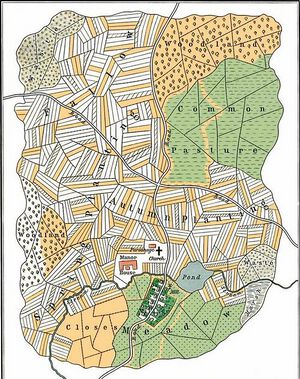Vlandian Organization in Rural Communities
An insight on the organization of the lands during the early phases of the feudal society in Calradia.
The Curtis
The Curtis was the whole group of villae and buildings where the Dominus (Lord) lived and performed his work as administrator of the lands. The Curtis comes from the old organization of the Calradic villae, many of which were left abandoned or decayed during the past centuries where the Vlandians managed to conquer and populate most of the lands where they live in now. The economy of the Curtis was almost completely of subsidance. In the Curtis the inhabitants farmed, fished, made good use of the woods and produces tools and weapons by temselves. Most of the times however the inhabitants of the Curtis used to trade with foreigners coming from other settlements with goods. Trade had an important role in the Curtis but however the shortage of excesses of production made the merchants come just in few and special occasions.
The Curtis was mainly split in two parts
Pars Massaricia
This was the part of the curtis given to some freemen or farmer in exchange of taxes. It was often the part given to small landowners that worked and lived there; the single part of it was called "manso" and that is where the "massari" (the freemen/arimanni) worked. The massari were in fact often the most wealthiest serfs. Kuchlerburg started as a "manso".
Pars Dominica
the Pars Dominica (the "Lords Part") was the part of the Curtis directly owned and managed by the Dominus. This was the central part of the Curtis and here the peasants worked for free, with sometimes the help of the freemen.
Corvées
Were a form of unpaid, unfree labour, which is intermittent in nature and which lasts limited periods of time: typically only a certain number of days' work each year. The Corvées could be both demanded by the Dominus itself to take care of some tasks within his domains or could be also asked to perform some public tasks for the common good.
The Immunitas
Immunitas is a term of the feudal law. In addition to lands, the lord could grant what were called "immunities", but were rights to conduct governmental functions such as the collecting of taxes and tolls, the holding of judicial proceedings, and even the coinage of money. In addition there were contingent duties the lord owed such as the duty to take back a fief that was rejected by an heir. This was a Lord or an Abbot was free to manage its fief more freely and with more independence.
Written by Wlodoviec

